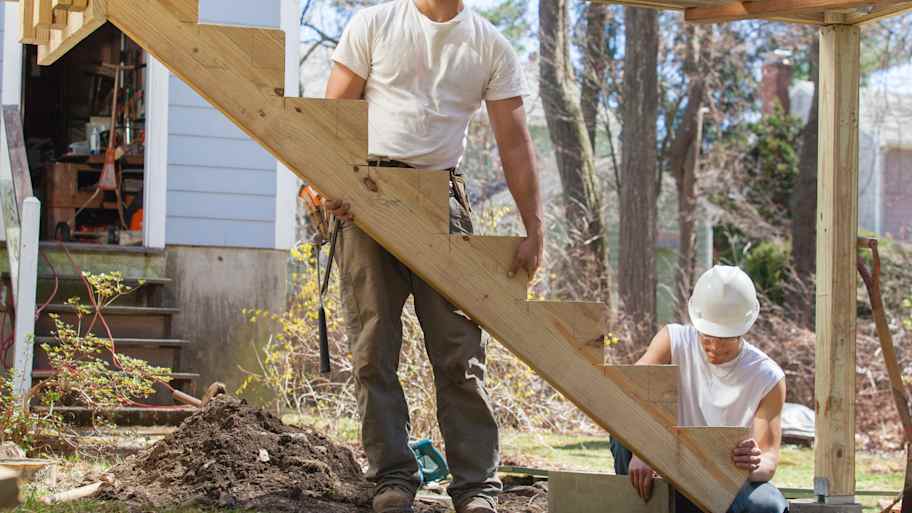
Recessed living rooms used to be popular but have fallen out of favor. This guide discusses the cost to raise a sunken living room to modernize your home.
Document, talk, and reclaim control


A poor job is when a contractor fails to meet agreed-upon standards, industry norms, and building codes.
Telling your contractor you are unhappy is the first step toward protecting your home investment.
If your contractor refuses to negotiate with you, there are legal steps you can take to protect your interests.
The remodeling project you dreamed of for so long went south. And now you're wondering what to do when a contractor does poor work. Thankfully, there are steps you can take, whether the issue is shoddy craftsmanship, half-baked projects, or broken promises. Here’s how to take control and turn things around.
Poor work is any ongoing or completed home project that fails to meet agreed-upon standards, local building codes, and industry norms. Examples include uneven flooring, doors or cabinets that can't fully open or close, leaky fixtures, sloppy paintwork, faulty wiring, and, worse, structural damage like removing a supporting wall.
Additional instances of poor work occur when a contractor cuts corners using substandard materials or the contractor doesn’t finish the job. Even if a completed project technically functions, it is still a job done wrong if it fails to meet the terms you agreed upon with the contractor or poses a long-term safety and performance concern.
While this is a difficult conversation for some homeowners, remember you want to protect the investment you made in your home. Ensuring you approach your contractor honestly and professionally while maintaining a constructive tone is the best way to convey issues and concerns.
Before you talk to your contractor, review the renovation contract you signed. It is essential to comb through all the details, including quality standards, materials, and deadlines.
The contract holds the contractor accountable. If you did not receive one, remember that any reputable and trustworthy local contractor would provide one. So, this is a lesson learned this time. Instead, gather any written communications, including emails or text messages, that set all expectations for the project.
First, schedule a time to speak when you are both free of distractions. You can approach it like this: “I have some concerns regarding the project and want to discuss them with you.”
Frame the conversation with a focus on solutions. Avoid playing the blame game or using accusatory language; stick to the facts to keep the talk from going sideways.
Share your specific areas of concern and explain why they don't meet your expectations and what you agreed upon before the work started. Consider sharing videos or pictures that illustrate the issues.
Remember, this is a two-way conversation, so allow the contractor to explain their side of the situation and offer solutions. There may be a reason for the issues or an opportunity for the contractor to correct the work.
If things are going well at this point in the conversation, you can lay out the next steps, including the terms for corrections and the timeline for repairs. Refrain from settling for a verbal agreement. All agreements should be in writing to avoid misunderstandings.
If your contractor refuses to address any issues, there are additional steps you can take.
Taking steps to confirm that the work done in your home was subpar will help hold your contractor accountable. You can work with a building inspector or an additional contractor to evaluate the work in your home. If it does fall below standards or building codes, it can be used as evidence later.
Depending on where you live, there are various ways to file a complaint or take legal action. Homeowners can reach out to the following places to file:
State licensed board for licensed contractors
Small Claims Court, depending on the monetary value of the work
If you’ve lost a good deal of money on the work, you can consider taking the contractor to civil court. You’ll need to hire an attorney who will provide next steps. Additionally, your local court systems may provide mediators at no cost to you or the contractor.
From average costs to expert advice, get all the answers you need to get your job done.

Recessed living rooms used to be popular but have fallen out of favor. This guide discusses the cost to raise a sunken living room to modernize your home.

Looking to turn your yard into a hockey or ice skating paradise this winter? Use this backyard ice rink cost guide to see what the installation will total.

Sometimes, all your home needs is a new wall to make a room or provide an updated function to an existing space. Learn how much it costs to install a new wall.

If you’re short on space, pocket doors aren’t your only option. Explore these 12 pocket door alternatives.

Stair stringers support every step you take. From wood to steel, open to closed—explore the different types, materials, and whether to DIY or hire a pro.

House construction is a lengthy and expensive project. Learn how to hire a contractor to build a house so they can take on the physical and mental load for you.